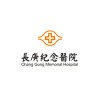
Phase 1 Study to Assess AER-271
StrokeStroke3 moreThe objective of this Phase 1 trial is to assess the safety, tolerability and pharmacokinetics of AER-271 in health subjects.

Alteplase Compared to Tenecteplase in Patients With Acute Ischemic Stroke
StrokeAcute2 moreThe proposed trial is a pragmatic, registry linked, prospective, randomized (1:1) controlled, open-label parallel group clinical trial with blinded endpoint assessment of 1600 patients to test if intravenous tenecteplase (0.25 mg/kg body weight, max dose 25 mg) is non-inferior to intravenous alteplase (0.9 mg/kg body weight) in patients with acute ischemic stroke otherwise eligible for intravenous thrombolysis as per standard care. All patients will have standard of care medical management on an acute stroke unit. There are no additional trial specific management recommendations. Patients will be followed for approximately 90-120 days.

Effect of Olmesartan and Nebivolol on Ambulatory Blood Pressure and Arterial Stiffness in Acute...
StrokeIschemicSingle-blind, randomized, active-treatment controlled clinical study evaluating the effect of omesartan and nebivolol versus no treatment on 24-hour brachial and central aortic blood pressure in hypertensive patients with acute ischemic stroke

Effects and Mechanism of Two Hybrid Exercise-cognitive Trainings in Mild Ischemic Stroke With Cognitive...
Stroke Patients With Cognitive DeclineThe purposes are to: (1) examine and compare the effects of two hybrid interventions on brain plasticity, physiological biomarkers and behavioral outcomes, including cognitive and physical functions, from pre- to post-training; (2) understand the neural mechanisms of cognitive recovery following two hybrid interventions using the functional magnetic resonance imaging (fMRI); (3) examine the long-term benefits of the two hybrid therapies; (4) to identify the correlations between brain activity, biomarkers and behavioral measures.

Stent Retriever's(TonbridgeMT) Endovascular Therapy for Acute Ischemic Stroke(AIS)
Ischemic StrokeThe study is a prospective, multi-center, stratified randomized, single-blind, parallel assignment, active control, non-inferiority trial. Patients are randomized 1 : 1 to either stent retriever(TonbridgeMT) or Solitaire™ for endovascular therapy for AIS. The study aims to evaluate the benefit and safety of stent retriever(TonbridgeMT) for AIS therapy, as compared to Solitaire™.

Rt-PA Thrombolytic Therapy in Combination With Remote Ischemic Conditioning for Acute Ischemic Stroke...
Ischemic StrokeThe purpose of this study is to determine the safety and feasibility of remote limb ischemic conditioning(RIC) in acute ischemic stroke patients who received r-tPA thrombolytic therapy.

Direct Intra-arterial Thrombectomy in Order to Revascularize AIS Patients With Large Vessel Occlusion...
Ischemic StrokeLarge Vessel Occlusion3 moreBackground: Intravenous thrombolysis (IVT) combined with mechanical thrombectomy (MT) has been proven safe and effective in patients with acute ischemic stroke (AIS) of anterior circulation large vessel occlusion (LVO). Despite recanalization, a considerable proportion of patients do not recover. The incidence of symptomatic intracerebral hemorrhage (sICH) was similar between combined IVT plus MT and IVT, suggesting that this complication could not be attributed to the MT, but rather to pre-treatment with IVT. Meanwhile, the incidence of intracranial atherosclerosis stenosis (ICAS) is higher in Asians. It is not clear whether patients with ICAS benefit from pretreatment with alteplase or not and how ICAS modifies treatment effect. Objective: To assess whether direct MT is non-inferior compared to combined IVT plus MT in patients with AIS due to an anterior circulation LVO, and to assess treatment effect modification by presence of ICAD. Study design: This is a parallel group, RCT of direct MT compared to combined IVT plus MT, using a non-inferiority design. The trial has observer blinded assessment of the primary outcome and of neuro-imaging at baseline and follow up. The trial will be executed in collaboration with MRCLEAN NO-IV investigators. Study population: Patients with AIS of anterior circulation VLO confirmed by CTA. Initiation of IVT must be feasible within 4.5 hours from symptom onset. Age must be 18 or over and NIHSS 2 or more. Main outcomes: The full distribution of the mRS at 3 months. Secondary outcomes: 1. death within 90 +/- 14 days; 2. pre-interventional reperfusion assessed on first intracranial DSA; 3. eTICI19 score on final angiography of MT; 4. score on the NIHSS at 24 +/- 6 hours and 5-7 days, or at discharge; 5. recanalization rate at 24-72h by CTA; 6. Final lesion volume at 5-7 days on NCCT20; 7. score on the EuroQoL 5-dimensions 5-level (EQ5D-5L)21 and Barthel index22 at 90 +/- 14 days; 8. dichotomous clinical outcome on the mRS at 90 +/- 14 days.

Magnesium And Verapamil After Recanalization in Ischemia of the Cerebrum: a Clinical and Translational...
Ischemic StrokeThis is a phase 1, blinded-outcome, randomized, placebo controlled study to investigate the safety and feasibility of super-selective intra-arterial administration of verapamil and magnesium sulfate immediately following successful endovascular thrombectomy as a potential neuroprotective synergistic therapeutic strategy in emergent large vessel occlusion stroke. This trial represents the first time that magnesium sulfate will be evaluated in human subjects as a superselectively administered neuroprotective agent administered in an acute time frame as an adjunct to intra-arterial thrombectomy. Furthermore, it will represent the first trial to evaluate combinational therapy for acute stroke neuroprotection.

The Trial of Ewata Balloon Guiding in the Application of Thrombectomy
Acute Ischemic StrokeTo evaluate the efficacy and security of Ewata combined with a stent device in the treatment of acute ischemic stroke within 8 hours To prove whether the clinical efficacy and safety of Ewata r is not inferior to other guidings.

The Effectiveness of Rehabilitation Training Based on Brain-computer Interface Technology to Improve...
Hemiplegia Following Ischemic StrokeTo evaluate the effectiveness and safety of rehabilitation training based on brain-computer interface in improving the upper motor function, self-care ability in daily life and quality of life in patients with ischemic stroke. This study adopts centralized uniform random 1:1 grouping, subjects will be randomly assigned to the experimental group and the control group. Randomization schemes are generated by statistical professionals using SAS software.
